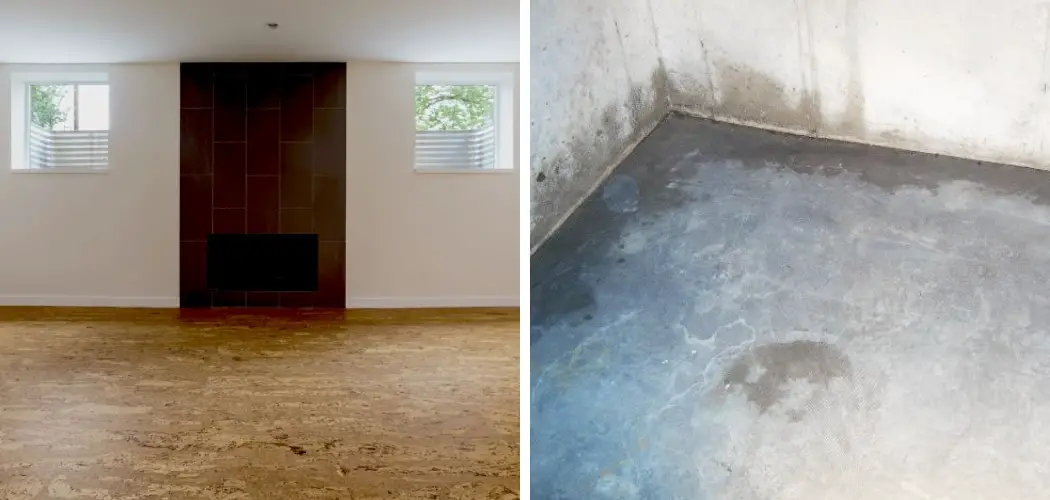High humidity levels in basements can create a number of problems, ranging from uncomfortable living conditions to potential mold growth. High moisture levels can damage furniture and other belongings stored in the basement and cause structural issues. Fortunately, there are several steps you can take to lower the humidity level in your basement, such as using air conditioning or dehumidifiers, sealing off vents, and improving ventilation. The main advantages of Lower Humidity in the Basement include improved energy efficiency and comfort.
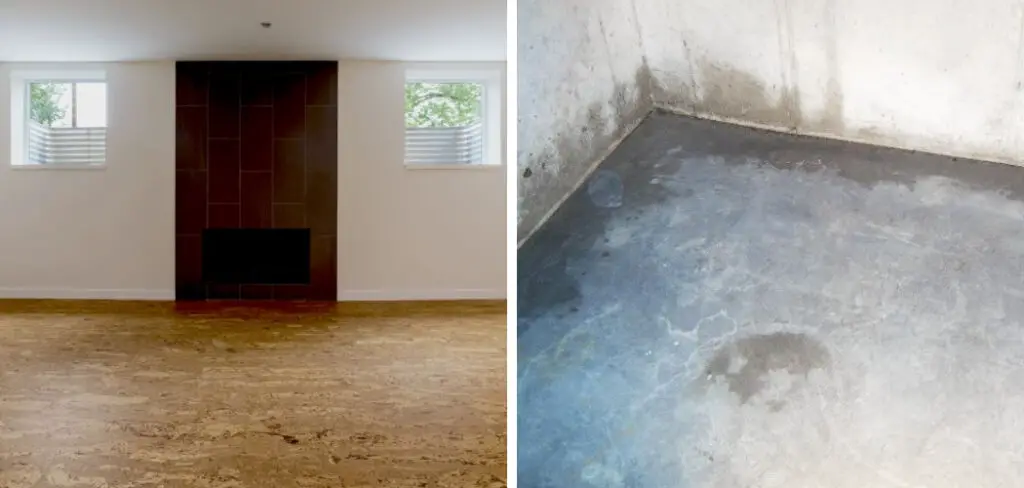
When humidity levels are lower, moisture is more difficult to collect on surfaces and encourages mold growth. Lowering the humidity will also reduce condensation formation, which can damage walls and other building materials. It can also help create a healthier living environment by reducing the spread of allergens, bacteria, and other microorganisms. Furthermore, it can help reduce the number of dust mites in your home, which is often responsible for indoor air quality problems. In this blog post, You will learn in detail how to lower humidity in basement.
Mechanical Systems or Tools You Will Need
- Dehumidifier: To help reduce the humidity levels in your basement, you must first purchase a high-quality dehumidifier. Many modern models come with digital humidity readers, allowing you to set and monitor the exact level of humidity desired.
- Ventilation Fans: If your basement has an existing ventilation system, such as an air conditioner or heater, it is recommended that you install additional ventilation fans. This will help to reduce the amount of moisture in the air and increase airflow throughout the space.
- Exhaust Fans: If your basement has no built-in ventilation system, you can easily install exhaust fans near problem areas such as showers or laundry rooms. They will help to draw out humid air and replace it with cleaner, drier air from the outside.
- Caulking: To ensure that no moist air is entering your basement from outside sources, you should re-caulk all windows and doors. This will help to reduce drafts and stop moisture from entering your home.
- Insulation: To further reduce humidity levels, consider adding insulation to your basement walls. This will help stabilize temperatures and act as a barrier between the humid air outside and the dryer air inside.
- Humidistat: Installing a humidistat in your basement will allow you to measure the exact level of humidity in the room. This will help you determine when it is time to turn on your dehumidifier, ventilation fans, and exhaust fans.
- Plastic Sheeting: In extreme cases, you may need to cover walls and flooring with plastic sheeting. This will help keep moisture from seeping into the walls and will help keep humidity levels down.
Overall, there are several mechanical systems and tools you can use to lower the humidity in your basement. These include dehumidifiers, ventilation fans, exhaust fans, caulking, insulation, humidistats, and plastic sheeting.
How Often Should You Check the Humidity Levels in Your Basement?
It is important to keep the humidity levels in your basement at a safe level. Too much moisture and humidity can create an ideal environment for mold, mildew, and other harmful bacteria that can cause health problems. It is important to check the humidity levels regularly to prevent this from occurring. How often you should check the humidity in your basement will depend on the humidity levels in your area.
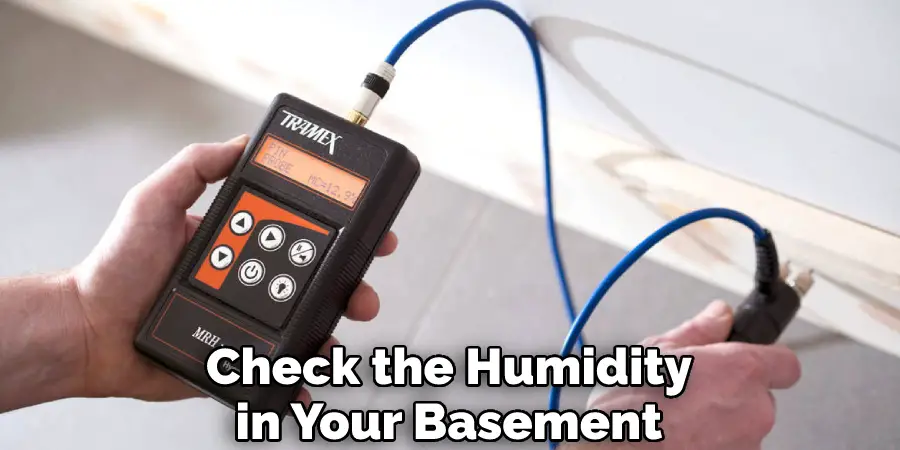
If you live in a humid climate, it is important to check the humidity levels at least once a week. This will help ensure that moisture and mold growth are not an issue if you live in a dryer climate or during drier times of the year, then checking the humidity levels once a month is recommended.
Step-by-Step Processes for How to Lower Humidity in Basement
Step 1: Inspect the Basement
Inspect the basement to locate any sources of moisture. Check for leaks in pipes, walls, and floors. Look for signs of condensation or water droplets on cold surfaces like windows, walls, and exposed pipes. Increase ventilation by opening windows if possible and using fans to circulate air. This will help to balance the humidity levels in the basement.
Step 2: Use a Dehumidifier
Invest in a dehumidifier to help lower the humidity levels in your basement. Dehumidifiers work by removing moisture from the air and trapping it in a container. This can be especially beneficial if you have high humidity levels due to poor ventilation or other sources of moisture.
Step 3: Remove Excess Moisture
It is important to remove any excess moisture in your basement. This can be done by mopping up standing water and using fans or dehumidifiers to circulate air and dry out damp areas. Additionally, ensure not to store items that can trap moisture in the basement, such as cardboard boxes and damp clothing.
Step 4: Reduce Humidity Levels in your Home
High humidity levels in the home can lead to moisture build-up in the basement. To reduce humidity levels, use exhaust fans in bathrooms and kitchens when cooking or showering, and make sure not to overcrowd closets or storage areas. Additionally, make sure to use a moisture barrier when building or renovating in the home.
Step 5: Monitor Humidity Levels
Monitor the humidity levels in your basement over time to ensure they stay within a safe range. The ideal relative humidity should be between 30-50%. You can purchase a hygrometer to help measure humidity levels in your basement. Additionally, use a dehumidifier or fans to maintain an acceptable moisture level in the air.
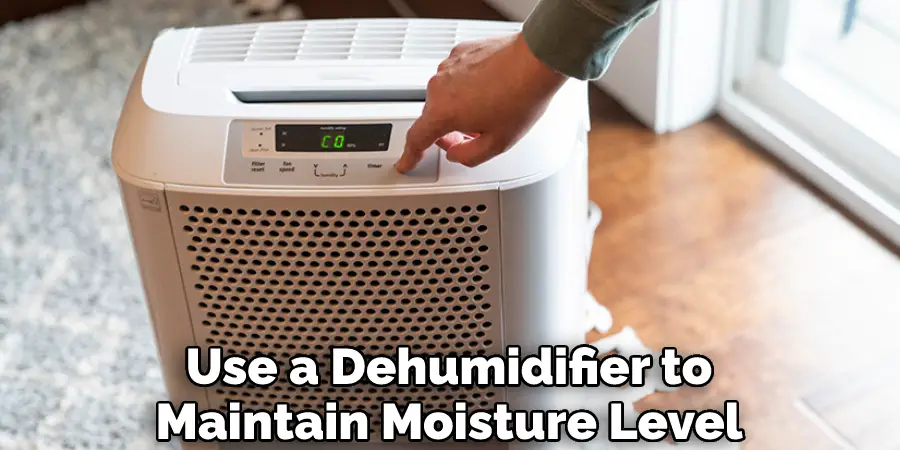
By following these steps, you can effectively lower humidity levels in your basement and keep it at a safe and comfortable range for you and your family. Proper maintenance and monitoring can create a healthy and inviting environment in your basement.
You Can Check It Out to Remove Humidity From Basement
Tips for How to Lower Humidity in Basement
- Ensure your basement is well ventilated. Installing fans, air conditioning units, and/or vents can help circulate the air.
- Use a dehumidifier to actively lower humidity levels in your basement. If you have an especially damp space, consider using two or more dehumidifiers to target problem areas.
- Inspect the walls and floors for water leaks or moisture. The dampness in your basement may be caused by a leak that must be addressed before you can effectively combat humidity.
- Create additional air flow with an electric fan. This can help circulate the humid air throughout the space, allowing it to dry quicker.
- Check your home’s drainage system. Make sure that your gutters and downspouts are in good working order to ensure the proper drainage of rainwater away from your home.
- Seal any cracks in the foundation or walls with a waterproof sealant. These could be allowing water vapor to build up inside your basement, leading to high humidity levels.
- Clean up any standing water in your basement. Any puddles or moisture should be mopped up ASAP to help reduce humidity levels in the area.
- Consider using dehumidifying paint on your walls and floors. This type of paint is designed to absorb extra moisture from the air, helping to lower humidity levels in your basement.
Following these tips can help ensure that the air quality in your basement is safe and comfortable while preventing any long-term damage to your home.
How Can You Prevent Moisture From Entering Your Basement and Causing It to Become Too Humid?
- Check for Air Leaks and Seal Them: Inspect the foundation for cracks, gaps, and holes that can let in moisture-laden air from outside. Seal any openings with caulking or foam insulation to prevent humid air from entering your basement.
- Install a Dehumidifier: A dehumidifier will help reduce the humidity in your basement and prevent mold growth.
- Install a Vapor Barrier: A vapor barrier is a material that prevents moisture from seeping through walls and floors. Make sure the vapor barrier is sealed properly to prevent the humid air from entering your basement.
- Ventilate the Space: Add vents or fans to ventilate the basement and allow air to circulate. This will help remove humid air from the space and make it more comfortable.
- Control Your Indoor Temperature: Keeping the humidity level in your basement too low can encourage mold growth, so try to keep your home’s thermostat set at a consistent temperature.

Following these steps can help you prevent moisture from entering your basement and causing it to become too humid. If the humidity level in your basement is too high at any time, consider installing a dehumidifier or ventilating the space more to reduce the humidity levels.
What Are Some Signs That Indicate High Levels of Humidity in a Basement Environment?
High humidity in a basement can create an uncomfortable environment and potentially damage items stored in the area. There are several signs that homeowners should look for that could indicate high levels of humidity in their basement, such as:
- Musty Odors: High humidity levels in your basement can often result in musty odors. This can be caused by excess moisture, which encourages the growth of mold and mildew.
- Excessive Condensation: Condensation can occur when warm air meets a cool surface like windows, walls, or pipes. If you notice water droplets on these surfaces, it could indicate that your basement is too humid.
- Damage to Stored Items: Humidity in a basement can cause wood and other materials to warp, distort or crack. It can also cause paper items like books and photographs to become discolored or even disintegrate over time.
- Peeling Paint: High humidity levels in the basement can cause paint on walls and ceilings to peel away from the surface. This can be caused by moisture seeping through the walls, causing them to swell and eventually separate from the paint.
By identifying these signs of a high humidity environment in your basement, you can take steps to reduce the levels and create a healthier, more comfortable atmosphere for your home.
Conclusion
The main disadvantage of lowering the humidity in a basement is the cost involved. A dehumidifier, for example, can be quite expensive and may require more energy than other methods. Additionally, there are other practical considerations, such as finding space to install the machine and having access to an appropriate power source. Other methods such as ventilation, weatherstripping, and caulking, require significant effort and money.
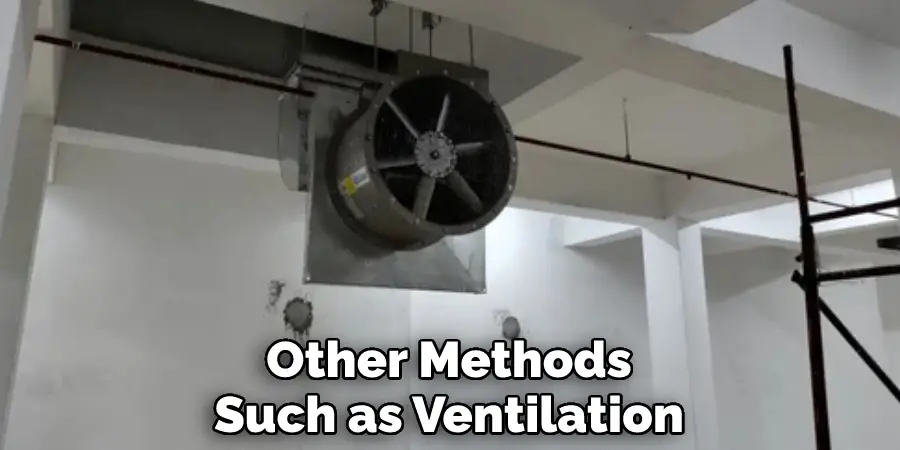
In conclusion, lowering the humidity in your basement is possible with a few simple steps. Ensuring proper ventilation, sealing off any drafts that may be entering the house, and using dehumidifiers will help you keep the humidity in check. With regular maintenance and attention to detail, you can enjoy a dry and comfortable basement for years to come. I hope this article has been beneficial in learning how to lower humidity in basement. Make Sure the precautionary measures are followed chronologically.

